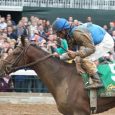In construction, one method of project and schedule modeling is the Critical Path Method or CPM for short. The critical path is the longest continuous chain of activities through the project schedule that results in the shortest project duration. The basis of the critical path relies on the dependency of the scheduled activities. Activities that are not on the critical path have “float,” which is the amount of time that an activity can delay without affecting the schedule.

How can we apply this to horse racing?
Instead of dependent activities establishing the critical path, horses that are dependent upon how the other entrants will race make up the race’s critical path. By reviewing running styles and adjusted call times we will be able to establish which horse or horses are going to dictate how the race will set up.
These horses can influence the pace in either a positive or negative manner. Many closers or pressers will have some float if the race points to a weak early pace. Often they can face a wider range of probable call times than the front runners can under similar conditions.
In a simple hypothetical example, we will consider a field of six horses running a six-furlong race. For each horse we will note the running style and normalize the call times for races run at different tracks using a selected pace line for comparison.

Horse A has the lowest adjusted second call time at 44.4 seconds. This will be the basis for our pace analysis of this race. The probable pace scenario here is that Horse A and Horse B will lock up in a speed duel. Since both are one-dimensional front runners, the race would set up for a horse to come from off the pace, most likely Horse F or Horse E.
Horse C may find the pace a little too fast and Horse D is not likely to be in contention. Whereas Horse A may show a fifth of a second advantage at both the adjusted first and second calls, that is generally not enough to eliminate the likelihood of Horse B applying negative pressure to impact the pace.
So which horse is the “Critical Pace Horse”?
Horse B.
If Horse B scratched, this would give Horse A a two-fifths of a second advantage over Horse F, which would allow for some breathing room when he is clear on the lead. When a one-dimensional front runner can get a comfortable lead without pressure, it tends to run a positive race.
If Horse A had scratched, Horse F would have pressured Horse B in this situation. And given his slim one-fifth of a second edge, he likely would have failed on the lead. In this case Horse B is providing a negative influence on the pace of Horse A and causing him to fail, which is a positive influence to Horse E and Horse F.
Being able to identify the horse that is critical to today’s pace will not only help you establish the probable pace scenarios for the race but will also alert you to reevaluate the pace should that critical pace horse scratch.




